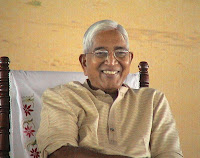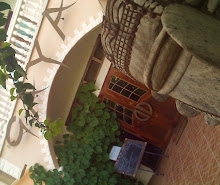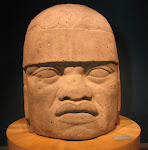This article first appeared in a magazine called Yoga International, it has been edited for this weblog.
The Raja Yoga system known as "Sahaj Marg" is still relatively obscure in the West, even among Yoga aficionados. Though its method may seem novel to some, those acquainted with the great Dharmic traditions will find Sahaj Marg a natural extension of the continuing refinement and accommodation that living yoga has always emphasized. Sahaj Marg is a practical method designed to give the direct experience of realization, right here, right now, in the midst of our daily situations.
Sahaj Marg has no credos, no dogma, no tenets. It is practical and experiential in its approach, and so members are asked not to simply believe what we hear or read, but to observe what we discover within; not to trust the claims of Sahaj Marg, but to test them as thoroughly as we can. Practice is something we do, not something we ponder. Until we realize for ourselves, all the claims of any spiritual practice are only secondhand information. So read and enjoy, do and become!
Where Religion Ends
All religions begin with the experience of God, the realization of a single person such as Christ or Buddha or Mohammed. After the founders pass on, their followers codify their teachings, and if these teachings are deep and true and helpful enough to stand the test of time, eventually they crystallize into a religion. But the original experience of its founder remains the bedrock of each religion, and to the degree that his followers can partake of that experience themselves, the religion remains valid and transformative, rather than degenerating into a set of mechanical rituals or a dry body of moral rules and social expectations.
Sahaj Marg also affirms the necessity of a realized Master in human form to assist most people in their journey Home. A true Master comes to serve, not rule, for as my Master's own Master taught, "God is the real Guru or Master and we get light from Him alone. But as it is extremely difficult for a man of ordinary talents to draw inspiration from God directly, we seek the help of one of our fellow beings who has established his connection with the Almighty." In Sahaj Marg, "Master" simply refers to one who has mastered himself, and who has the ability to make Masters like himself. Thus, though the Masters of the Sahaj Marg lineage are each unique in terms of physique, personality, taste, and temperament, in their most essential Nature they are one and the same person.
Tradition and Transformation
Sahaj Marg is usually presented as a refinement of Raja Yoga. Ultimately, however, it must be understood as a distillation of the yogas of Jnana, Karma,Bhakti and Raja as well.
These four yogas arrive at a place where all paths end and merge, which we may call whatever we please, since words don't matter at this point: the kingdom of God, the Source, the Center, or the Impersonal Absolute. This is why Vivekananda advised yogis to be like a bird, have Bhakti Yoga as one wing, Jnana Yoga as the other wing, and Raja Yoga as the guiding tailfeathers.
Sahaj Marg reminds us that yoga, and in particular Raja Yoga, is a not and never was a frozen practice, fixed at some point in the distant past and codified by Patanjali around the Second Century AD in his Yoga Sutras. Even the highest concepts and most honored methods must evolve as the situations of men change. Methods which were suitable for a bull-cart society may not be so suitable in the vastly different world of the late 20th Century.
Those acquainted with Raja Yoga will be familiar with Patanjali's Eight Limbs, the Ashtanga steps of Raja Yoga. These have usually been viewed as steps leading to the final union of self with Self, of human with divine -- which is what the word yoga, or "yoke," implies. Whether Patanjali ever intended his "Eight Limbs" to be considered as sequential and consequential stages is debatable, but Sahaj Marg takes a simultaneous and global approach to the practice of Raja Yoga.
The Circumference is Nowwhere
Contrary to some notions, Sahaj Marg teaches that meditation is easy and requires no preliminary steps for anyone who has a normal state of mental health -- in fact, Sahaj Marg teaches that only by meditating can we learn to meditate. The psychologically dangerous aspect of Pranayama has been superseded in Sahaj Marg by Pranahuti (prana-ahuti, literally "offering Prana"), by which an individual can transmit spiritual reality directly from the center of his or her existence to the center of another individual's existence.
The yogic transmission of subtle or Divine energy by one whose own life-force, or Prana, is realized at such a high vibratory level that it can awaken the dormant Prana in others across any distance by the merest thought or Sankalpa was known to adepts in the distant past, but had fallen into a sort of honored desuetude until it was re- discovered as a useful technique for 20th Century by Shri Ram Chandra of Fatehgarh (1873-1931).
The art of Pranahuti was transmitted by Lalaji to his most fit disciple, who by coincidence also bore the name Ram Chandra. This disciple, now known as Shri Ram Chandra of Shahjahanpur (or more simply as Babuji, since he worked all his life as a "babu," or clerk) perfected the practices of Sahaj Marg, distilling a natural and simple method of meditation from the traditional procedures of Raja Yoga, established the Shri Ram Chandra Mission in 1945 in honor of his guru, and upon his death or Mahasamadhi in 1983 transmitted his essence to his disciple, Shri Parthasarathi Rajagopalachari.
The Centre is Everywhere
Sahaj Marg insists that the highest spiritual attainments can be realized by anyone at any time in any place. In recognition of this understanding, Pranahuti or yogic transmission can be received not only directly from the Master, who is an adept in the art, but also via preceptors who have been personally prepared by the Master to serve as conductors of Pranahuti. Over 900 preceptors now serve worldwide. These preceptors can be likened to transformers in neighborhoods that direct and regulate the energy from a distant power plant for individual use. Preceptors are themselves abhyasis (practitioners) who are still evolving at varying levels of spiritual maturity.
The Simple Way
What, then, does one actually do in Sahaj Marg? According to the teachings of Sahaj Marg, God is simple, and the Way to God may also be simple. Thus there are no rituals in Sahaj Marg. Do's and don'ts are few. There are no secret mantras or mudras, no arcane Asanas, no special clothes, no changing of names. Really, there is nothing about Sahaj Marg to believe or disbelieve, because the practice involves direct experience. Sahaj Marg asks us not to believe, but to observe; not to trust, but to test.
The daily abhyas or practices are quite simple. The abhyasi is asked to sit comfortably and meditate at the beginning of the day for at least 30 minutes, eventually for an hour if possible, focusing on the heart (a preceptor can detail the method).
At the end of the day, sit again for at least 30 minutes, but this time, the purpose is for cleaning, and again the technique is quite simple. Weekly Satsanghs or group meditations are helpful, along with individual sittings from preceptors. Abhyasis are encouraged to keep a diary of their inner life, and most soon notice a feeling of Shanti or peace, a sense of lightness, and an awakened intuitive ability.
So the basic practice takes about one or two hours a day -- we begin our day with meditation, end it with another, and enter sleep in a state of prayer. By an art called "Constant Remembrance" the abhyasi can eventually extend these meditations to 24 hours a day. Curiously enough, many find that the simplicity of the practice is its major difficulty, especially since Sahaj Marg claims to aim for a level of human perfection beyond that which even Patanjali described. This claim can be easily tested, for Sahaj Marg was designed so that even the busiest person could integrate a profoundly transformative spiritual practice into his or her daily life.
This brief description of Sahaj Marg is little more than a menu, and though reading a menu may whet the appetite, it can hardly satisfy the stomach.
Fine dining whenever you want to eat out in Senegambia.
A unique Gambia restaurant for both Gambian and global cuisine.
Come and enjoy our restaurant in The Gambia!
Directions Bertil Harding Highway, next to Senegambia Craft Market
220 4464022
220 6664022
gaya@qanet.gm
gayagambia@gmail.com
www.gayaartcafe.com/
Friday, August 8, 2008
Subscribe to:
Comments (Atom)






























.jpg)

















